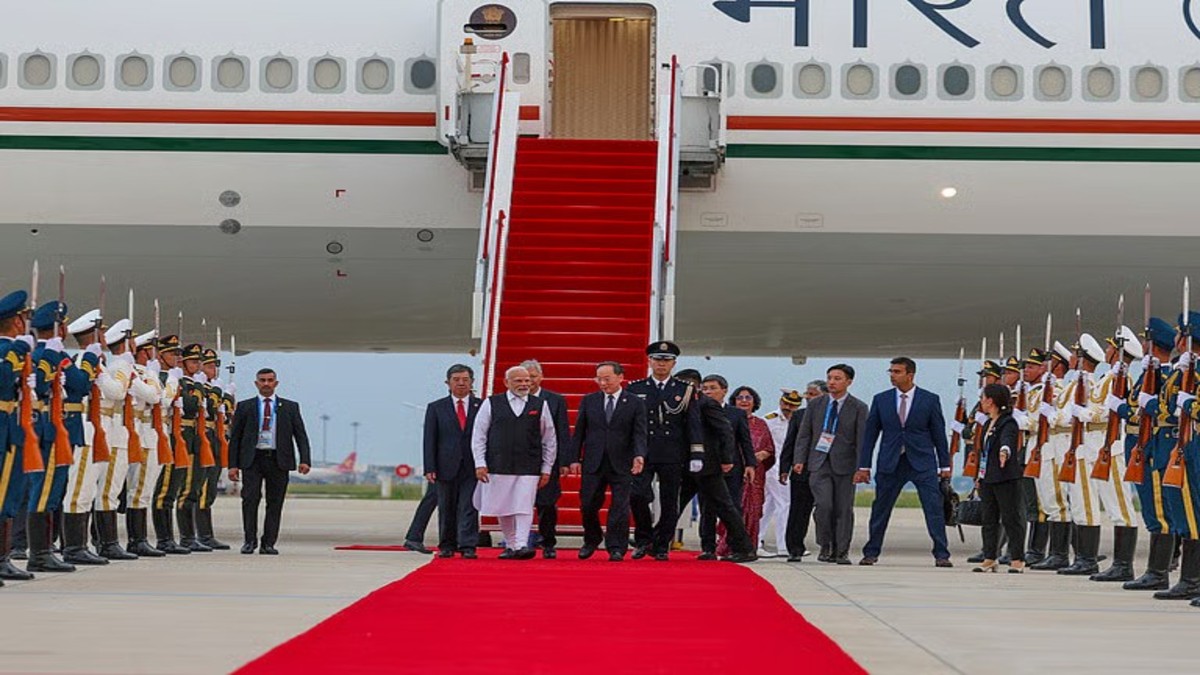China’s Foreign Minister and Chinese Communist Party Politburo Member Wang Yi visited New Delhi on August 18-19. The visit came amid a seeming thaw in bilateral ties between the two countries. While a slew of recent developments between India and China exhibit steady progress in ties, the détente in effect is only a tactical easing of tensions.
Wang Yi’s trip to New Delhi was in line with the high-level interactions that have taken place since October 2024. Marking real-time progress on the complex border issue, India and China agreed to set up an Expert Group under the Working Mechanism for Consultation and Coordination on India-China Border Affairs to explore early harvest in border areas.
Additionally, Wang Yi’s meeting with Jaishankar set the stage for Prime Minister Modi’s visit to Tianjin for the Shanghai Cooperation Organisation (SCO) Council of Heads of State Summit. The Chinese Foreign Minister’s meeting with Prime Minister Narendra Modi further underscored the importance China accords to his visit to China. In fact, Chinese envoy to India Xu Feihong recently told the press that Beijing attaches “great importance” to Modi’s visit to the country not only for the summit but also for bilateral ties. Indian National Security Advisor Doval also hailed a ‘quiet’ border and an ‘upward trend’ in bilateral ties with China.
Undeniably the recent months have witnessed a series of positive developments, including the resumption of the Kailash-Mansarovar Yatra and issuance of visas to Chinese tourists. However, the sudden recalibration of foreign policies of both India and China owes itself to US President Donald Trump’s tariff blitz. As for India, Trump’s imposition of 50 per cent penalty tariffs, repeated claims of brokering the India-Pakistan ceasefire, and claims of India’s seven jets being downed by Pakistan during Operation Sindoor have altered New Delhi’s strategic outlook vis-à-vis Washington.
In fact, the appointment of Sergio Gor as US ambassador to India, who would also be holding the portfolio of Special Envoy for South and Central Asian Affairs, has raised concerns in New Delhi regarding Trump’s intent on re-hyphenating India and Pakistan in the region. India has thus been pushed to re-explore its ties with China. Yet the détente in Indo-China ties seems temporary.
Impact Shorts
More ShortsDespite China’s recent criticism of Trump’s tariffs on India and Chinese envoy Xu calling out Trump as a ‘bully’ , Beijing’s double game with India has for long followed a discernible pattern. Its quest to become the foremost power in Asia has adhered to a visible trend of containing India and expanding its sphere of influence in the region.
China’s efforts to keep India engaged in a volatile neighbourhood are evident through a series of strategic moves. These include its export curbs on rare earth minerals to India, and the continuing unresolved border dispute in the eastern Ladakh. China’s reported plans to construct a Xinjiang-Tibet rail link near the Line of Actual Control add another layer of tension. The sensitive issue of the Dalai Lama’s succession also remains a point of contention.
Additionally, Beijing’s construction of a multi-billion-dollar mega dam on the lower reaches of the Brahmaputra River, coupled with a lack of transparency in sharing hydrological data, has raised serious concerns in India.
China’s duplicity on terrorism was on display during SCO Defence Ministers’ Summit when the statement did not mention the Pahalgam terror attack, leading to Defence Minister Rajnath Singh refusing to sign the document. Furthermore, its ironclad friendship with Pakistan—evident from active military support to Islamabad during Operation Sindoor—underscores a larger pattern of strategic pressure on India.
China has put in place its trilateral diplomacy in South Asia. Beijing’s decision to extend the China-Pakistan Economic Corridor (Cpec) project to Afghanistan and its convening of a trilateral meeting with Pakistan and Bangladesh in Kunming in June are a case in point.
China’s permanent adversarial attitude towards India suggests that developments such as the resumption of direct flights between the two countries are only a game of optics. The Trump factor has altered dynamics in India-China ties but has not necessarily led to a strategic thaw.
Wang Yi’s visit to Pakistan soon after his trip to India and Jaishankar’s visit to Russia after meeting the Chinese Foreign Minister in New Delhi hint at Indo-Pacific powers amping up their respective strategic partnerships in the face of Trump’s disruptive tactics that have induced unpredictability in Asian security calculations. With Trump declaring that the ‘Brics is dead’ and threatening countries that ‘play games with the dollar’, there is likely to be greater cohesion of Brics as a grouping.
India must continue diplomatic ties with China at all levels but remain cautious and take calculated steps to navigate ties with Beijing. The India-China détente is only a marriage of convenience that is likely to outlive itself in the future. It is rather a message to the West, especially Trump, of Asian solidarity. For India, practising multi-alignment and focusing on its neighbourhood-first policy are the key tactics to preserve its strategic autonomy. Modi’s participation at the SCO Council of Heads of State Summit in China is therefore the next right step for India.
The author is an independent foreign policy analyst and a former Visiting Fellow to Fudan Development Institute in Shanghai. The views expressed in the above piece are personal and solely those of the author. They do not necessarily reflect Firstpost’s views.
)